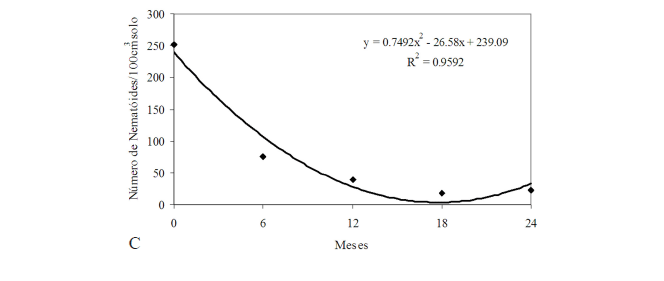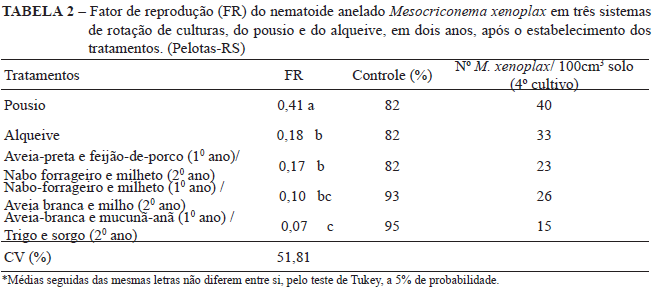In a field naturally infested with ring nematode (Mesocriconema xenoplax), green covering were tested for their hostel in winter and summer crops comparing to plots kept in fallow lands. Tree crop rotation system with the same plant species (black oat/pig bean/ millet/forage radish; forage radish/ millet/white oat/corn; and white oat/mucuna deeringiana/wheat/sorghum) were evaluated for suppression potential to nematode M. xenoplax for two years, using as witness plots that were kept in fallow lands. The experiments were conducted in the field in a randomized block design with six repetitions. Before and after the establishment of each plot, the nematode populations were evaluated on the number of M. xenoplax/100cm³ of soil and the reproduction factor (RF= final population/initial population) of the ring nematode, where RF<1,00 showed suppression and RF> 1,00, favoring of the reproduction. Most of the crops analyzed were unfavorable host (RF<1,00) of M. xenoplax, except the mucuna deeringiana that behaved as favorable to the nematode reproduction. Although all treatments have removed M. xenoplax the crop rotations forage radish/ millet/white oat/corn and white oat/mucuna deeringiana/wheat/sorghum realized the largest reduction of the nematode in the soil (93-95%).It was noted a sharp decline in the M. xenoplax population in the first two crops, with later stabilization of its level, regardless of the studied system.
Mesocriconema xenoplax; peach tree short life; soil management; crops rotation; host suitability







